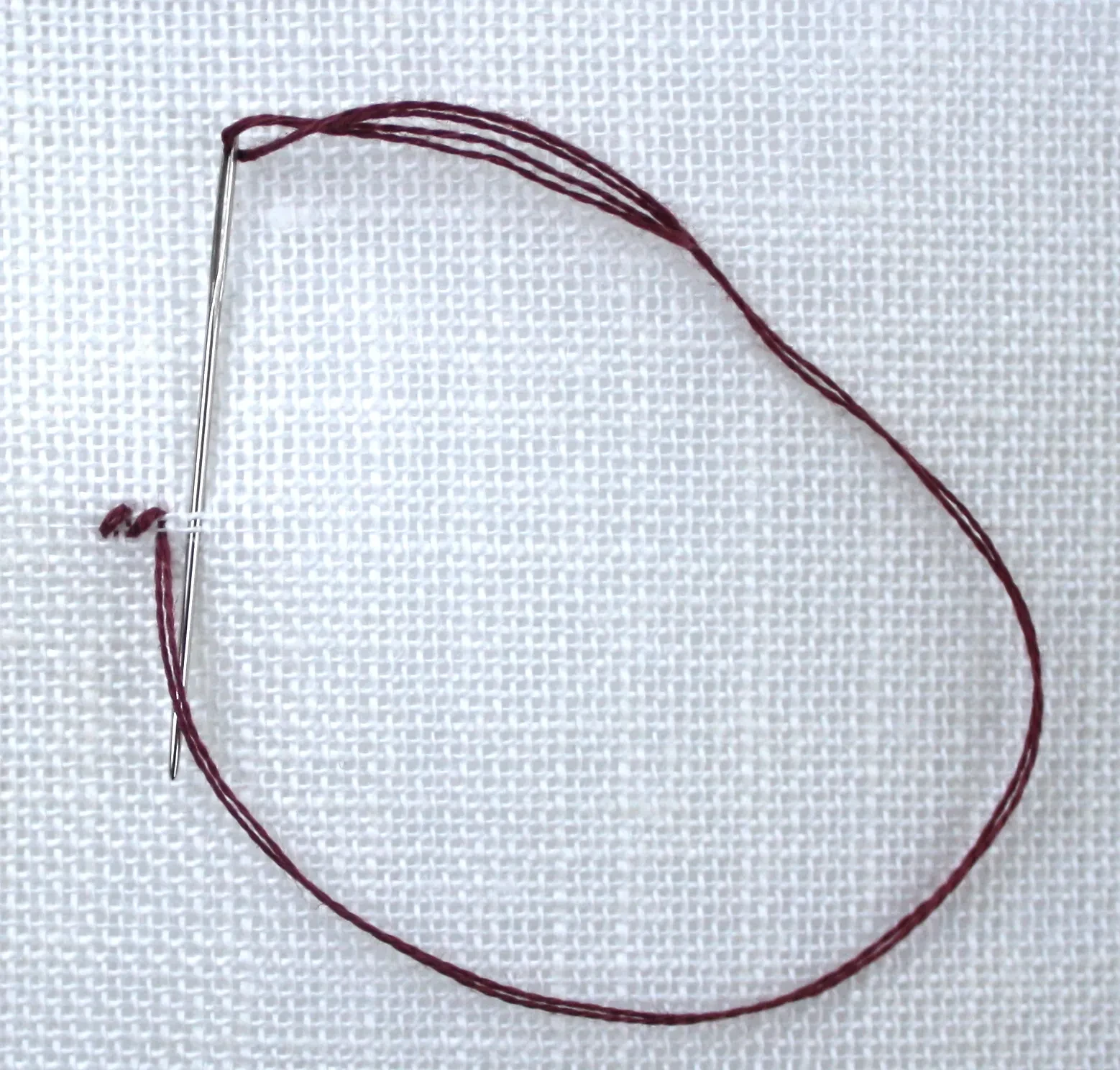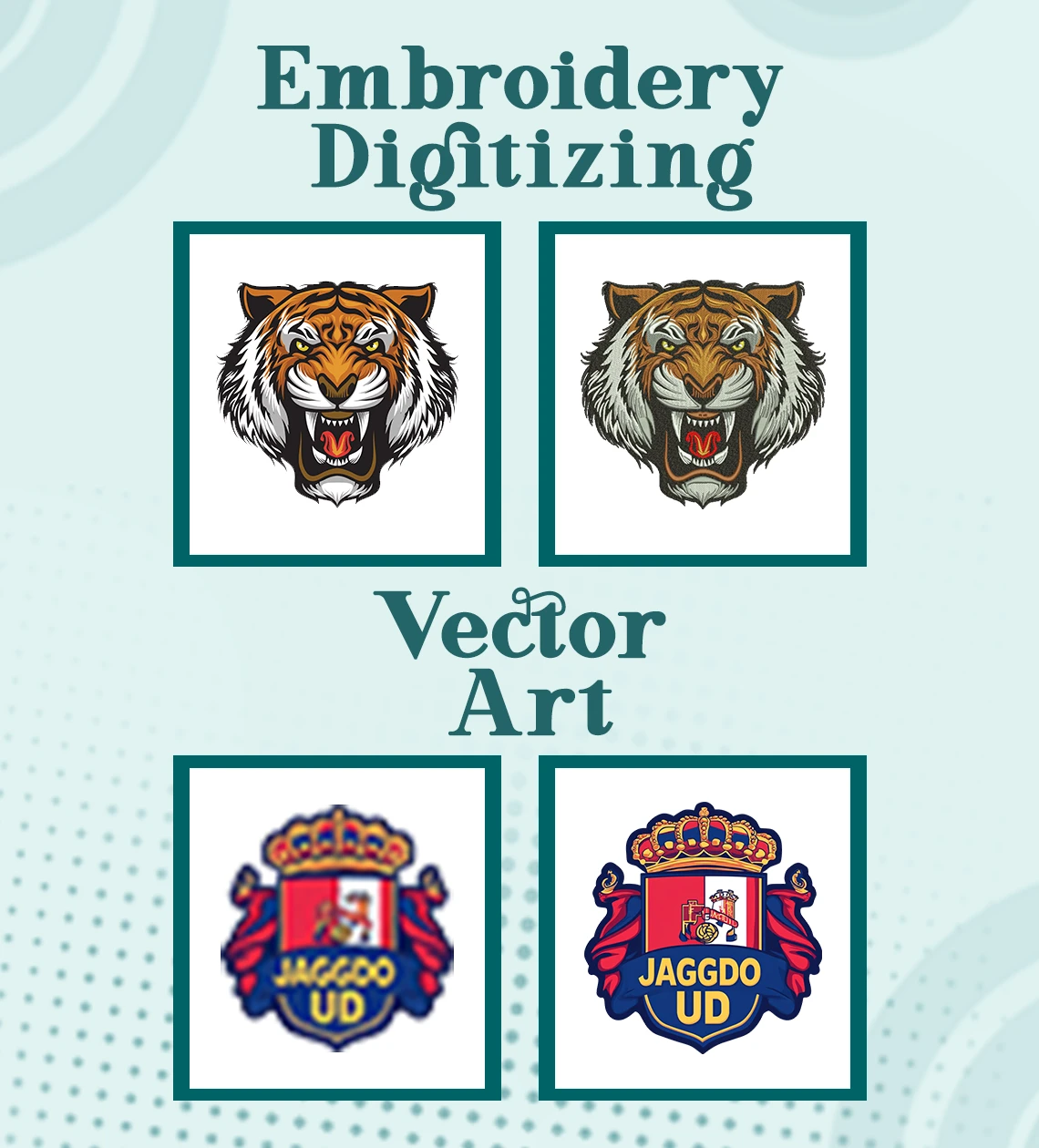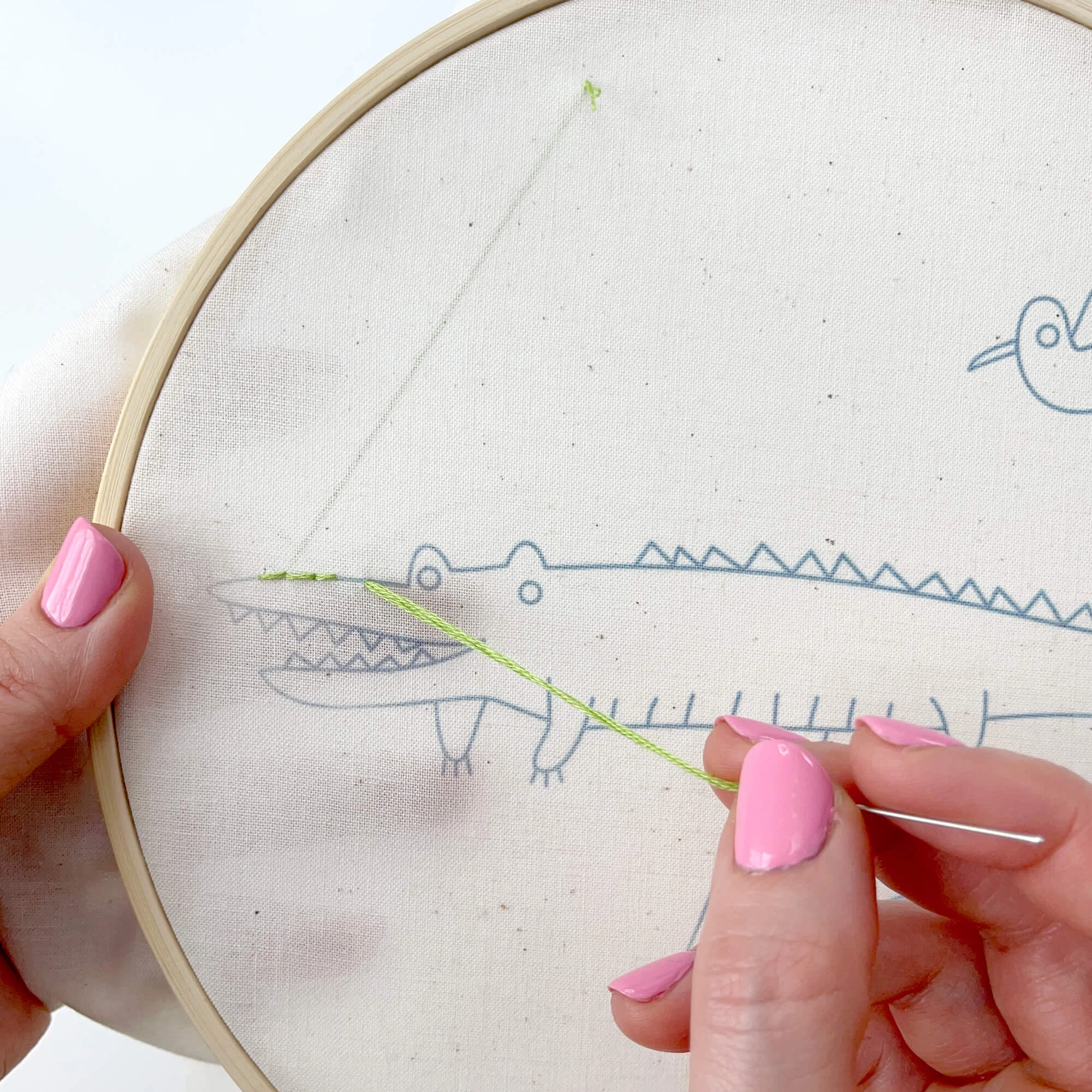
One of the most traditional ways to start an embroidery stitch line is by tying a knot at the end of your thread. This method is easy and works well for beginners. Here’s how to do it:
Cut your embroidery thread to the desired length (typically 18 - 24 inches for easy handling).
Tie a small knot at the end of the thread.
Bring the needle through the fabric from the underside. The knot will keep the thread from pulling through.
This method is simple when practicing basic embroidery stitches like running stitch or backstitch.
Watch this tutorial on how to start embroidery stitches without a knot.
Using Knots is practical but can sometimes create unnecessary bulk, especially for complex designs. Here are alternative methods to start embroidery stitches without a knot:
A waste knot method involves tying a knot at the end of your thread, but instead of incorporating it into your design, you place it in a temporary spot away from your stitching area.
Tie a knot at the end of the thread and secure it on the front of the fabric.
Begin stitching, ensuring that your stitches pass over the thread on the back of your embroidery of the fabric.
Once secure, snip off the waste knot.
Using the waste knot method is perfect for designs like chain stitch embroidery, where clean knots at the back are essential.

The loop start method works best for embroidery using an even number of thread strands.
Fold the thread in half and thread the looped end through the needle.
Insert the needle into the fabric, leaving the loop on the underside.
Pass the needle back through the loop to anchor the thread securely.
This method is good for cross-stitch projects, as it keeps the back of the fabric tidy.
Anchoring is the best way to begin embroidery stitches, especially for outline and filling stitches.
Starting outline stitches with anchors
Bring the needle up through the fabric and make a small backstitch to secure the thread.
Start your outline stitching, such as a stem or split stitch.
For filling stitches like satin or long and short stitches:
Create a few tiny stitches at the starting point to secure the thread.
Begin your filling stitches, ensuring the anchors are hidden beneath the design.
The holding stitch method is simple yet effective for securing your thread without a knot.
Insert the needle into the fabric and create a short stitch on the underside.
Use subsequent stitches to hold the tail in place as you work.
This technique works well for delicate flower embroidery stitches, ensuring a seamless finish.
Sometimes, the easiest solutions are the best. A traditional knot remains a reliable method for starting embroidery stitches.
Just ensure the knot is small enough to avoid creating lumps in your design.
This method is especially useful for thicker fabric where other anchoring techniques may fail.
At True Digitizing, we offer quick turnaround times, guaranteed quality, and the option to preview your design before making a payment. We ensure you get exactly what you need. We are committed to delivering the best results every time. What are you waiting for? Contact True Digitizing today and experience the difference in quality and service.

Ending embroidery stitches neatly is just as important as starting them.
Starting with a long tail
Leave a short tail of thread when finishing your stitch.
Weave the tail into the back of your stitches to secure it.
Starting with anchoring stitches
Make small overlapping stitches on the underside to hold the thread in place.
Trim any excess thread for a clean finish.
On the underside of the fabric, create a small "X" with your thread.
This secures the thread without the need for knots.
Finishing your embroidery stitches requires precision. Always aim to:
Weave the thread into existing stitches for a smooth look.
Avoid bulky knots, especially for designs like chain embroidery stitch or cross stitch that demand a neat finish.
When filling shapes with embroidery stitches, such as satin stitches or French knots:
Use small anchor stitches to start and end your thread.
Keep the tension even to maintain smooth, professional-looking results.
It’s a common misconception that embroidery is all about stitching. Techniques like applique or attaching pre-embroidered patches can add texture and depth without traditional stitches. Explore creative methods that align with your project goals.
How to Start an Embroidery Stitch by Hand?

Starting hand embroidery is as much about preparation as it is about technique. Begin with these steps:
Gather quality embroidery supplies, including a hoop, needle, thread, floss, and fabric.
Decide on your preferred starting method (knot, loop, or anchor).
Practice simple basic embroidery stitches to gain confidence before tackling complex designs.
Embroidery is an art form that thrives on patience and practice. By learning techniques like knots, loops, and anchors, you can bring your creativity to life on fabric. Whether you're experimenting with flower embroidery stitches or exploring the versatility of different types of embroidery stitches, the possibilities are unlimited. For digitizing your designs into embroidery-ready patterns, True Digitizing offers top-notch services that can elevate your embroidery projects to a professional level.
Ready to start stitching? Let your creativity flow, and don’t forget to explore new designs with True Digitizing’s expert solutions.Nick William has been immersed in the world of embroidery digitizing for over 20 years, earning 25 industry awards throughout his career. As a 3rd generation embroidery expert, Nick’s journey started in his family’s workshop, where he learned the art of digitizing before the rise of modern software. He has worked with leading commercial embroidery businesses and has shared his expertise with over 75,000 home and professional embroiderers. As an author at True Digitizing, Nick is passionate about teaching others how to create beautiful, precise designs through easy-to-follow tutorials and expert advice.
Categories

6 Popular Types of Vector Files 2025
16-04-2025

How To Create A Vector File: Step-by-Step Guide
15-04-2025

What Is A Vector File? Everything You Need To Know
14-04-2025

Best Janome Embroidery Machines You Need to Check Out in 2025
11-04-2025

Custom Embroidery Digitized Designs For Hoodie Lovers
10-04-2025

Best Embroidery Patches For Your Clothes
10-04-2025

Professional Online Photo Digitizing Services Provided by True Digitizing
09-04-2025

Best Babylock Embroidery Machines For You
09-04-2025

Barudan Embroidery Machines: From Beginners to Professionals
04-04-2025

Custom Sweatshirt Embroidery Digitized Designs By True Digitizing
03-04-2025